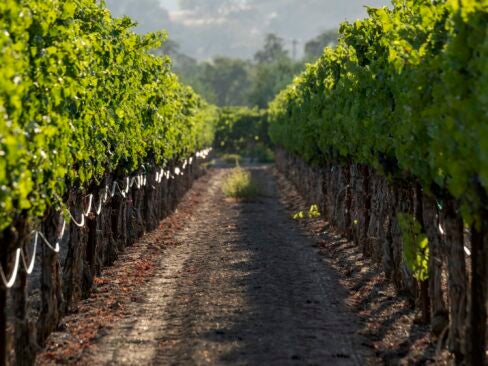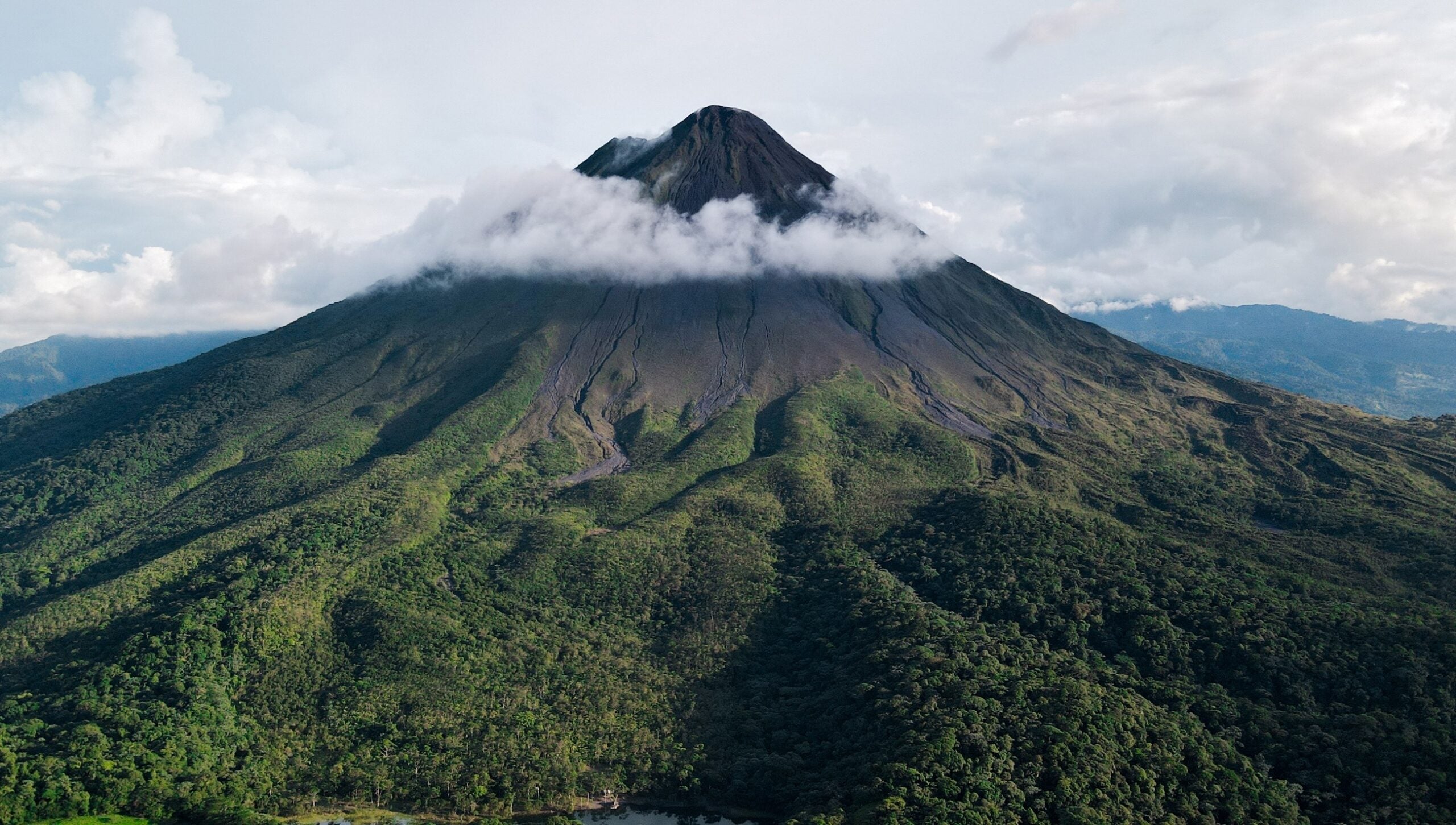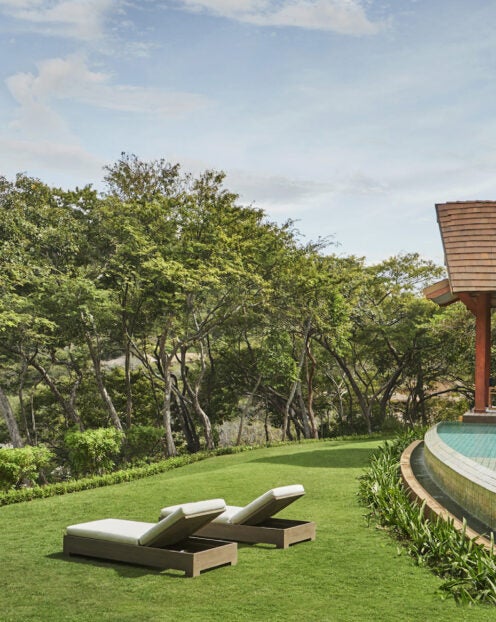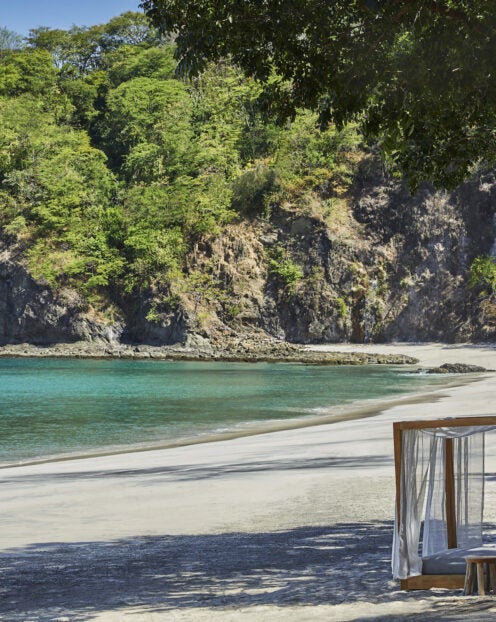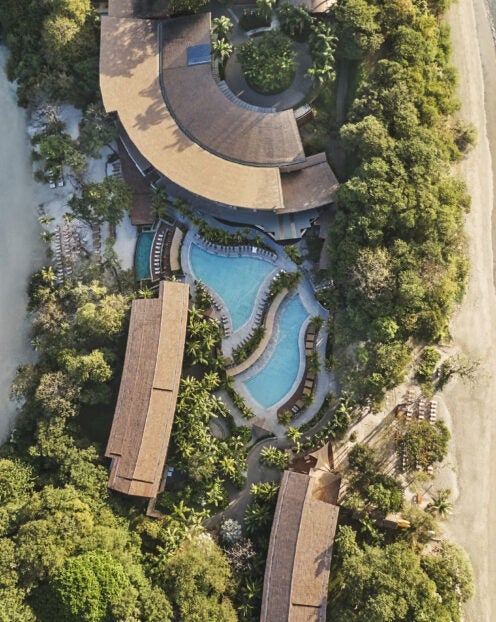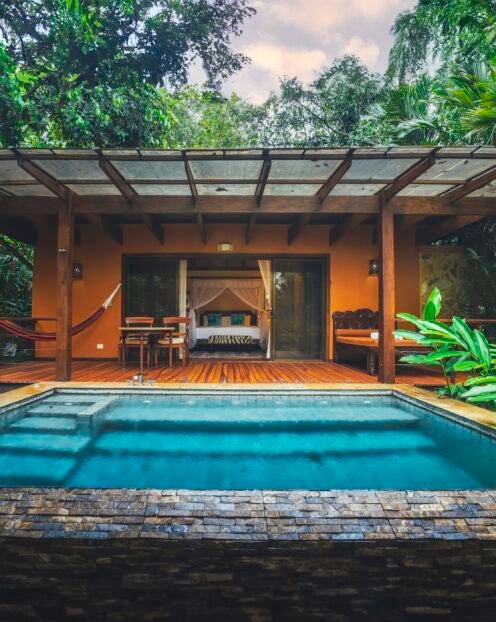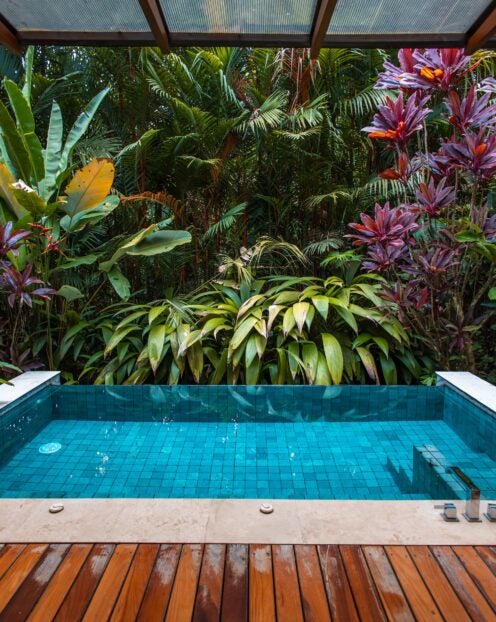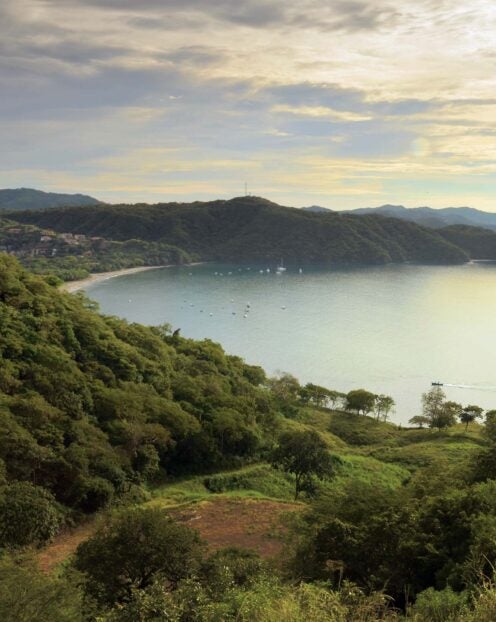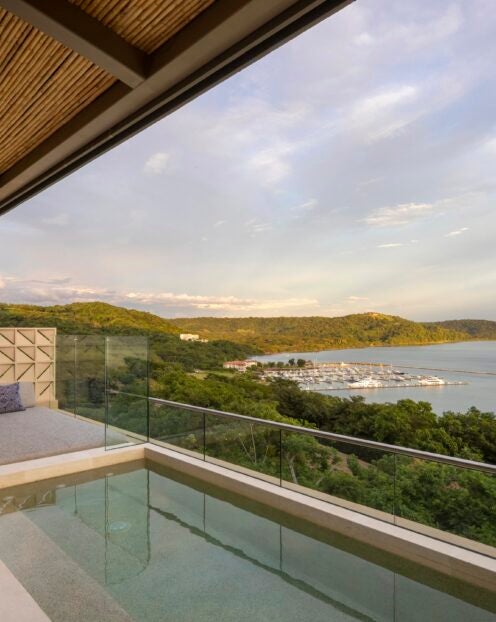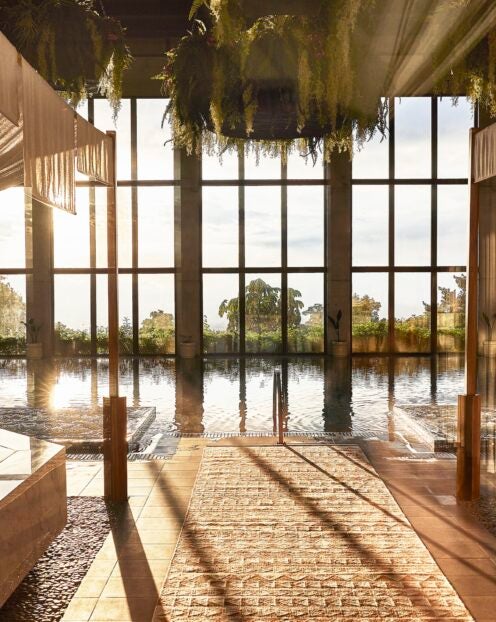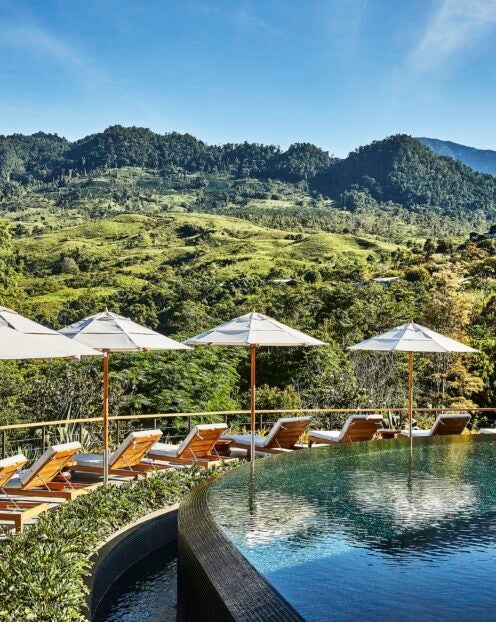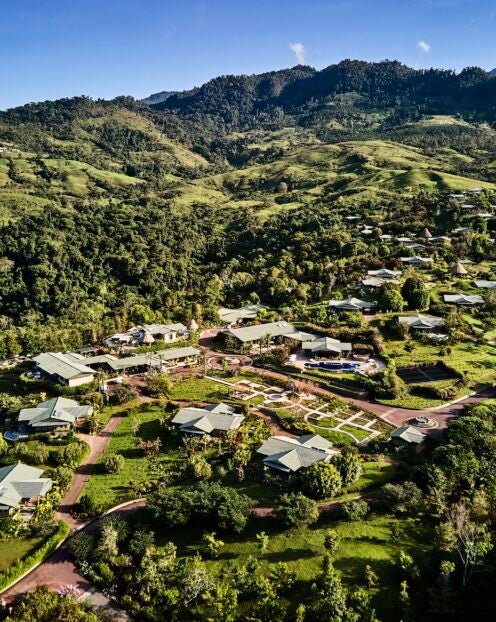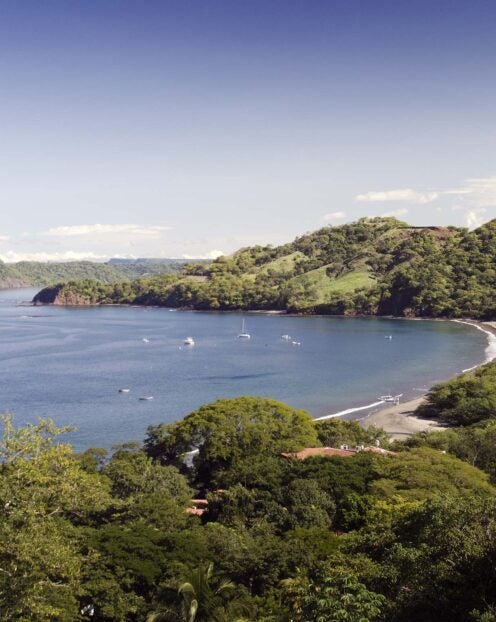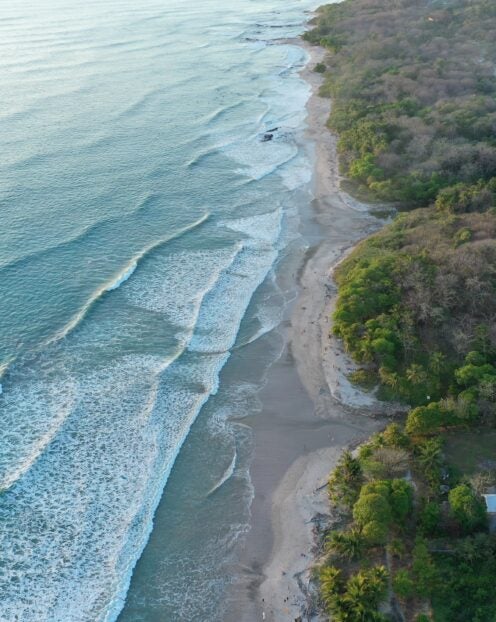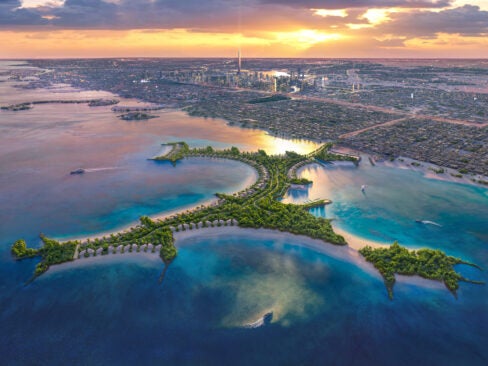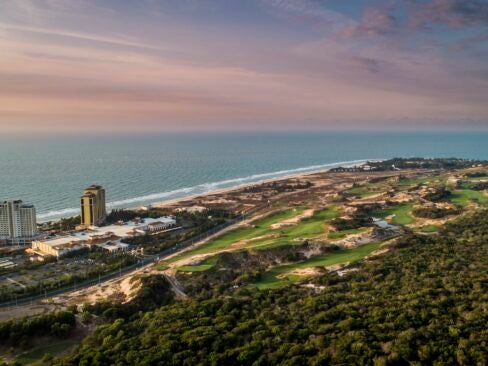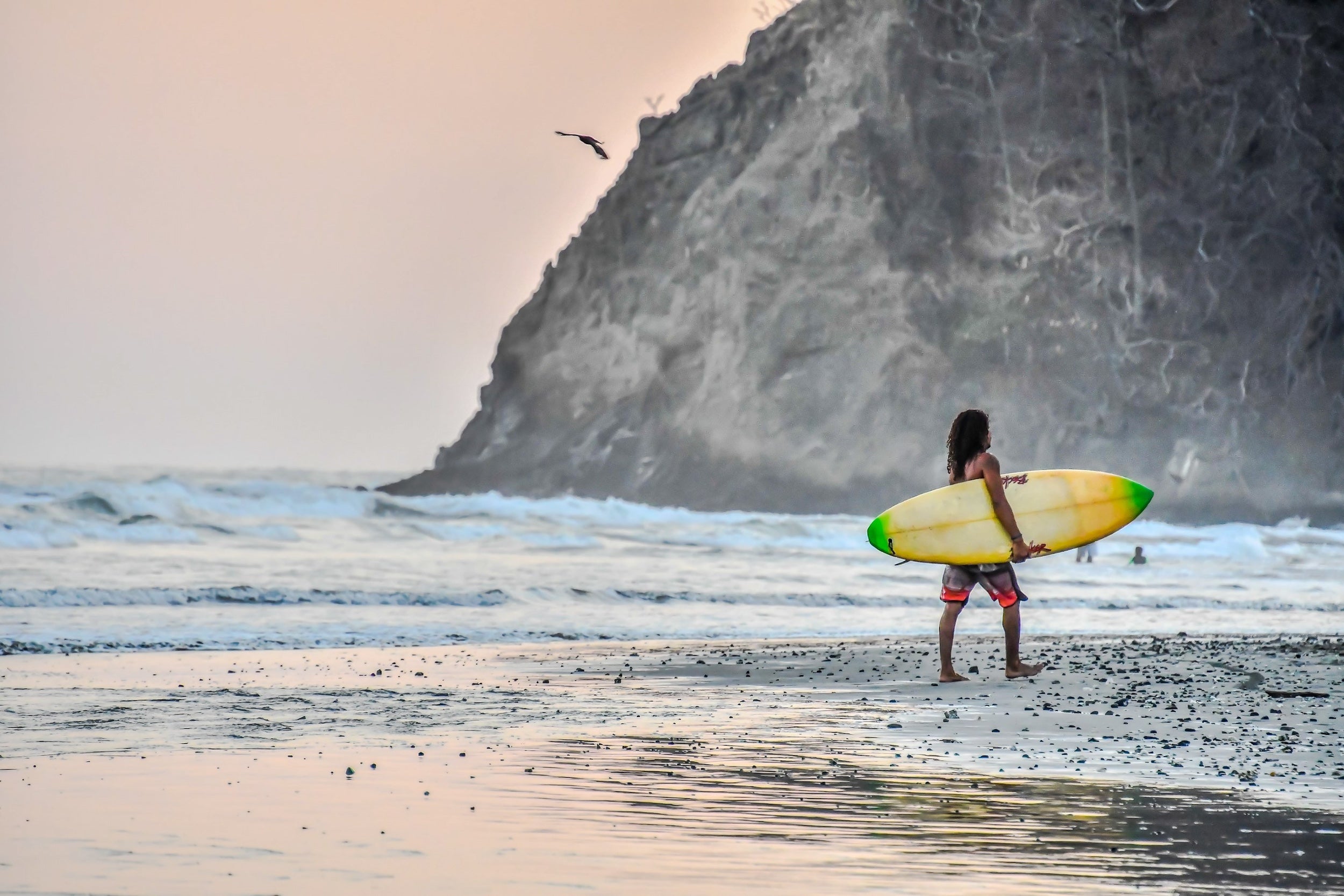
There are few countries on Earth that prioritize environmental stewardship and protect biodiversity and cultural heritage while offering fabulous eco-conscious accommodations that allow global travelers to share in the beauty. Costa Rica, however, is a rare gem that embodies this delicate balance.
The Central American country may be revered as one of the most renowned surfing and laid-back beach destinations, but it’s also one of the most biodiverse places on the planet, with more than a half-million species of flora and fauna. Nearly 28% of its land is safeguarded through an extensive network of national parks and reserves, and the country has four Unesco World Heritage Sites.
Its varied landscapes encompass pink-, black- and white-sand beaches; rugged mountain ranges; active and extinct volcanoes; serene rivers; sparkling lakes; and cascading waterfalls. Nature is woven deeply into the fabric of Costa Rican life, epitomized by the ubiquitous phrase pura vida, meaning ‘pure life.’ More than a simple greeting or farewell, pura vida reflects the country’s relaxed, optimistic spirit and a celebration of life’s simplest pleasures. Costa Rica is also home to one of the world’s five Blue Zones, the Nicoya Peninsula. This term coined by author and journalist Dan Buettner refers to regions in the world where people live much longer and healthier lives than the average person.
Costa Rica is a sanctuary for those seeking rejuvenation, adventure or luxury, and no matter what draws you to this wondrous tropical country, you can be assured of a one-of-a-kind experience that embodies a life well-lived. Spend time resort-hopping throughout the country to experience each crevice of the land and get the most out of your trip, from the coastal beaches to the volcanoes, rain forests, national parks and surf breaks.
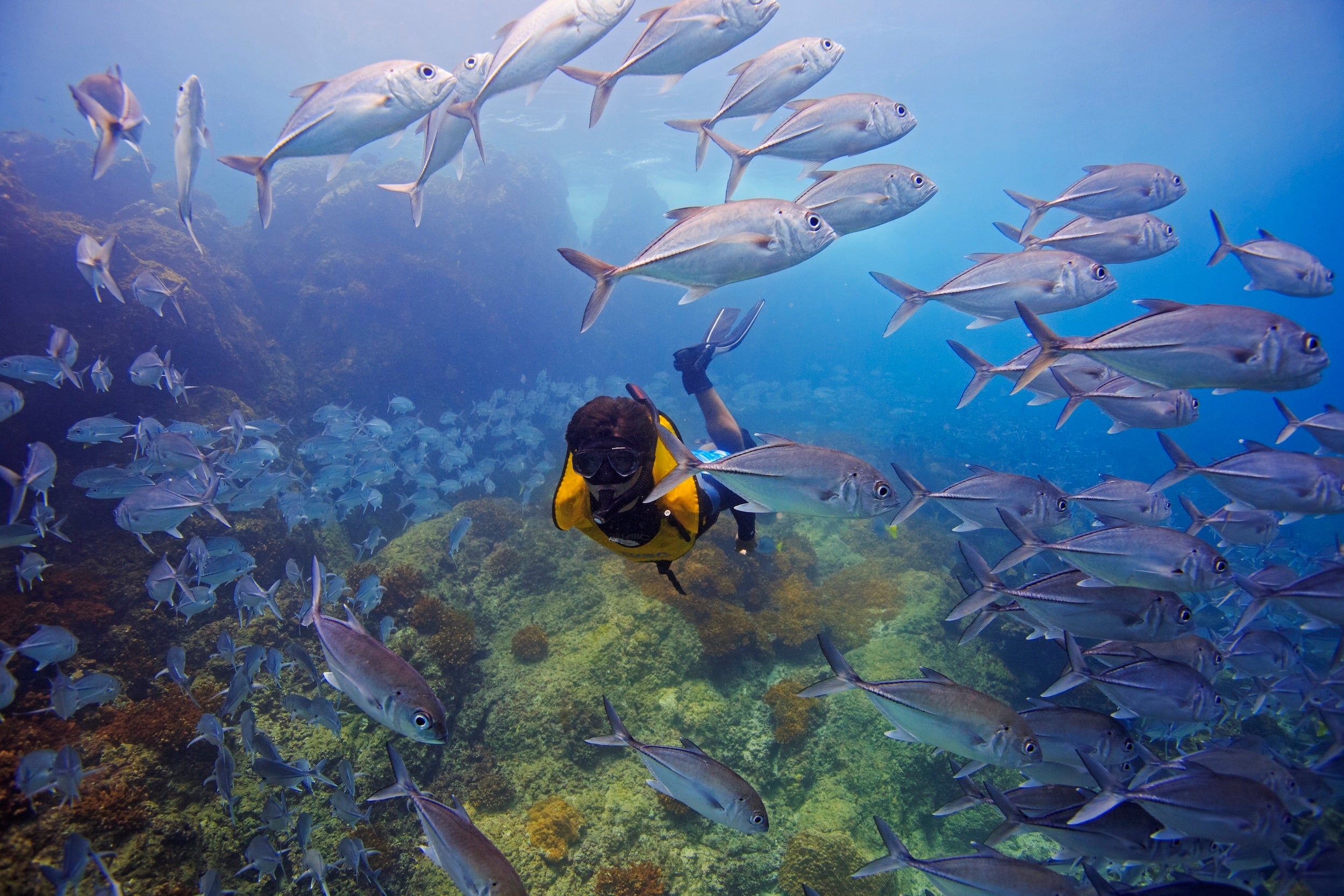
Surfing
In the late 1960s and throughout the 1970s, surfing gained popularity in Costa Rica among American and European travelers drawn to the country’s Pacific coast for its consistent waves and beautiful beaches. Today, Costa Rica is renowned for its surf breaks and reliable year-round swells, making it a top choice for surfers of all levels and one of the safer places to learn.
Tamarindo is a lively surf town with numerous surf schools, camps and competitions at Playa Tamarindo, Playa Langosta and Playa Grande. For a more laid-back vibe, Nosarain the Nicoya Peninsula offers easygoing surf schools, local restaurants and boutique lodgings (both perfect for unwinding) at Tierra Magnifica or Harmony Hotel, after a day on the waves.
Further south, Santa Teresa’s jungle-backed beaches attract everyone from property developers to backpackers and relaxed locals; it’s replete with fresh seafood, charming boutiques and artisan cocktails at Drift Bar. Neighboring Mal Paísremains more under the radar, home to the four-star Casa Chameleon Resort and tranquil stretches of sand like Secret Beach that feel miles away from the crowds.
National Parks
With 30 national parks and over 100 wildlife refuges, reserves and protected zones in Costa Rica, you simply can’t go wrong wherever you choose, and most hotels can organize expert-led guided trips — recommended for both safety and educational purposes. While here, don’t miss Corcovado National Park, which is considered one of the most biodiverse places on Earth. There’s rain forest; rare wildlife (jaguars, tapirs and scarlet macaws); waterfalls; and beaches.
Tortuguero National Parkon the northern Caribbean coast is predominantly famous for its leatherback, green and rare hawksbill sea turtles; it’s sometimes referred to as the ‘Amazon of Costa Rica’ for its dense mangroves, wetlands and tranquil canals. Easily accessible from the capital of San José, Manuel Antonio National Park is one of the country’s most popular parks, where you can see monkeys, sloths and tropical birds. Well-marked trails and wildlife watching, as well as picture-perfect beaches, make this park fantastic.
Arenal Volcano National Park is home to the active Arenal Volcano, hot springs, tree frogs, jaguars, lakes and forests. It’s here you can enjoy adventure activities from white-water rafting to zip-lining and hiking, as well as nearby local restaurants in the town of La Fortuna.
Other ecologically rich protected areas worth a visit include Cahuita National Park with coral reefs and beaches, Poás Volcano National Park to look directly down Poás’ massive crater for a glimpse at the aquamarine acidic lake at the bottom, and Marino Ballena National Park for whale-watching. The Gandoca-Manzanillo Mixed Wildlife Refuge on the southern Caribbean coast is considered the best snorkeling and diving spot, where you can observe sea turtles, dolphins and vibrant colorful fish.
Monteverde Cloud Forest (a tropical or subtropical rainforest characterized by seasonal or near-constant cloud cover) is strikingly beautiful. And while a hike any time of day here would be enchanting, those on a mission to see the most wildlife possible should consider booking a night walk, where you can witness unique nocturnal wildlife, like bats, owls, tarantulas, frogs, bioluminescent organisms, sloths and kinkajous. For your safety, be sure to go with a knowledgeable guide – night walks can be arranged through recommendations from your hotel’s concierge.
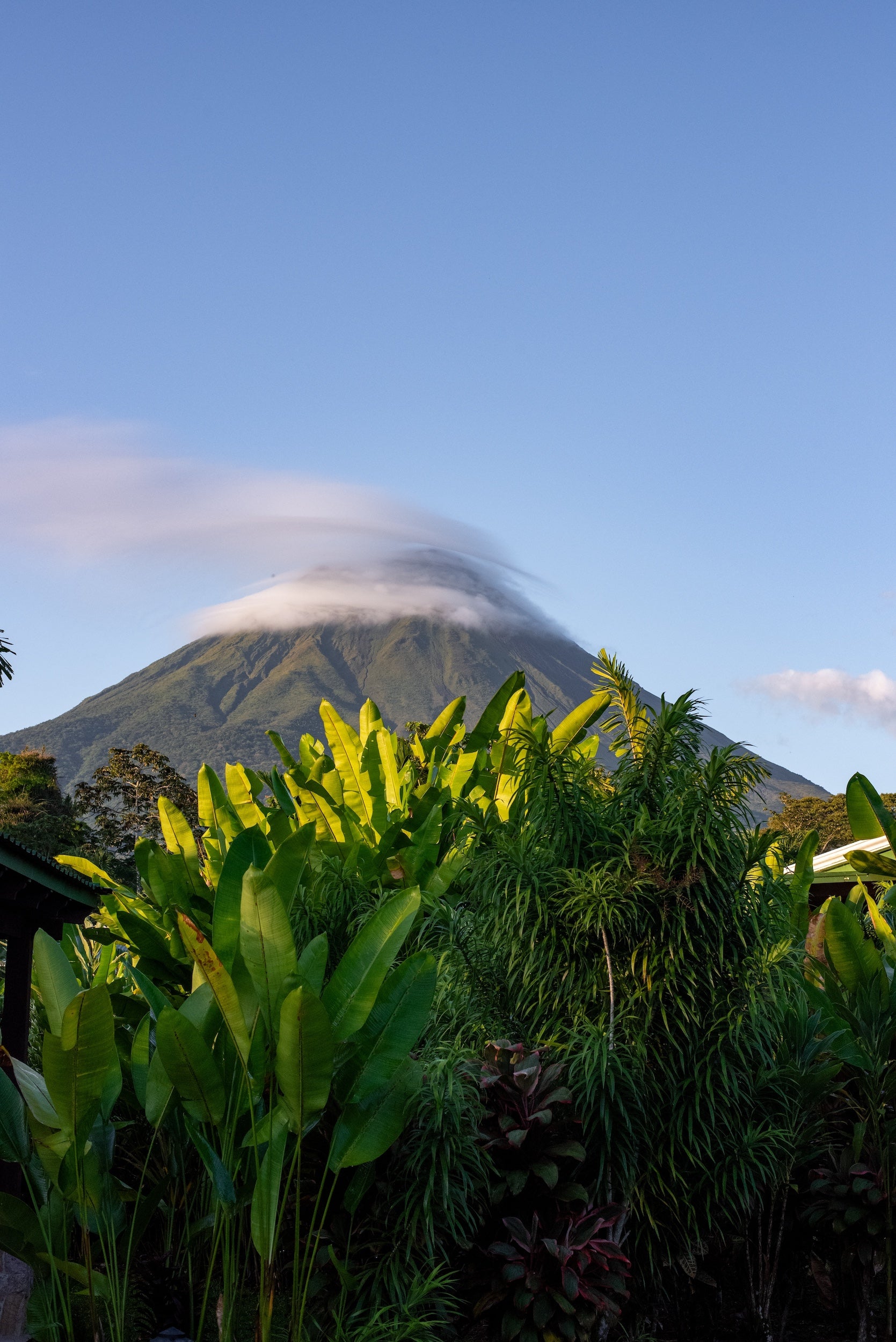
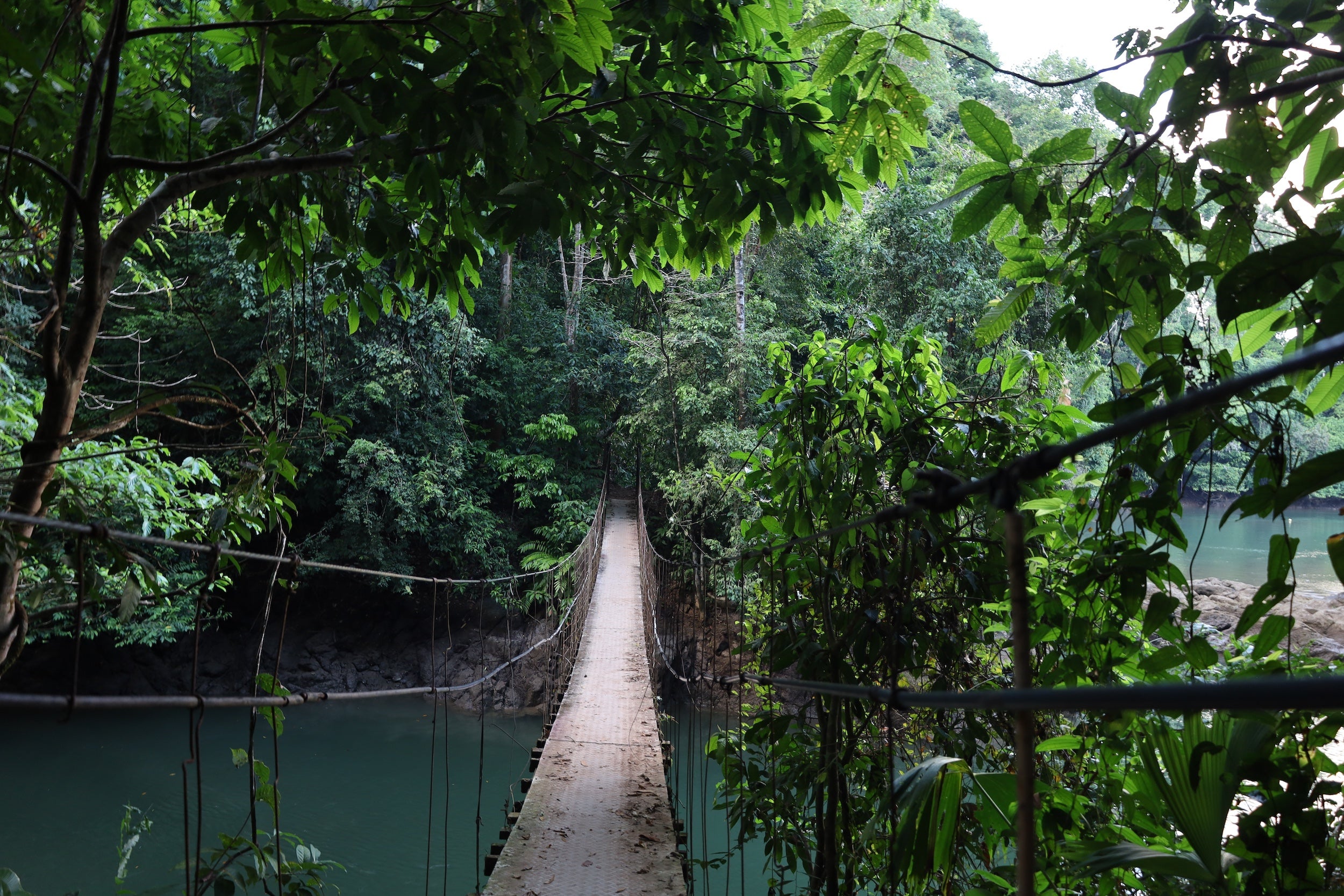
Coffee tours
Following Costa Rica’s 1821 independence, coffee cultivation blossomed, becoming a cornerstone of the country’s economy. Called el grano de oro, or the golden grain, coffee flourishes here thanks to fertile volcanic soils, high altitudes, cool climates and ample rainfall.
Some 50,000 individually owned farms, growing mostly Arabica beans in the Central Highlands and southern mountain ranges, reflect coffee’s integration into Costa Rican life. Visitors can experience this heritage at Hacienda AltaGracia’s Los Jilgueros experience, as well as at other must-visit spots like Doka Estate, Hacienda Espíritu Santo and the Don Juan Coffee Tour.
Hot springs
Costa Rica naturally offers relaxation and rejuvenation through its volcanic-heated hot springs, brimming with mineral-rich thermal waters and surrounded by lush tropical landscapes. These springs, long prized for their therapeutic properties, can be found throughout the country.
Many high-end resorts, such as Tabacón Thermal Resort and Spa, are built around them, offering luxurious ways to experience the healing benefits. For a more rustic dip, head to Río Negro Hot Springs near Rincón de la Vieja Volcano (accessible through Hacienda Guachipelín for a small fee), or visit the free, local-favorite stretch of the Tabacón River.
Where To Stay
Where to eat in Costa Rica
There’s an endless array of incredible dining across Costa Rica, from fine-dining establishments to hyper-local, family-run eateries (typically known as sodas), and typical Costa Rican cafes. The Michelin Guide doesn’t publish in the country (yet) so there are no starred restaurants, but there is no shortage of can’t-miss hotspots serving up local delicacies. The country has long held high standards for organic produce, biodynamic farming, fresh seafood and homegrown ingredients, which contribute to the Nicoya region’s Blue Zone status.
All across Costa Rica, you’ll find healthy food with fresh, clean ingredients, with each of the seven provinces offering a unique take on national and international cuisine. In San José, Sikwa was the first restaurant in the country to appear on Latin America’s 50 Best Restaurants list. The restaurant was opened in collaboration with the indigenous Bribri community; it aims to preserve and revitalize the culinary traditions of Costa Rica by interpreting traditional ingredients and recipes that have been orally handed down through generations.
Near Tamarindo, HiR Fine Dining is more than a restaurant, it’s the home of chef Mercedes Noam Kostucki, who opens up her personal address for 12 lucky individuals per night for an informal seven-course meal. Taco Star is a locally loved open-air taco stand favored by surfers and beachgoers in Playa Grande. Enjoy a swim and laze on the hammocks to savor one of the best tacos in the area.
When in Santa Teresa, pay a visit to Soda Tiquicia, a chill local spot serving up delectable gallo pinto, one of Costa Rica’s most famous dishes, comprised of beans and rice. The five-star W Costa Rica Reserva Conchal is home to the sophisticated fine-dining restaurant Latitud 10°Norte, which pairs expert mixology with an elevated gastronomic experience highlighting Costa Rican flavors. Enjoy a meal followed by a stop at the hotel’s buzzy beach club.
When to visit
Costa Rica’s climate encompasses everything from mist-shrouded highlands to humid rainforests and sun-kissed beaches. Though warm weather prevails year-round, the country has two distinct seasons: the dry season (December-April) offers radiant sunshine and prime conditions for outdoor exploration, while the rainy season (May-November) brings verdant landscapes and fewer visitors, ensuring a more secluded, intimate experience.
